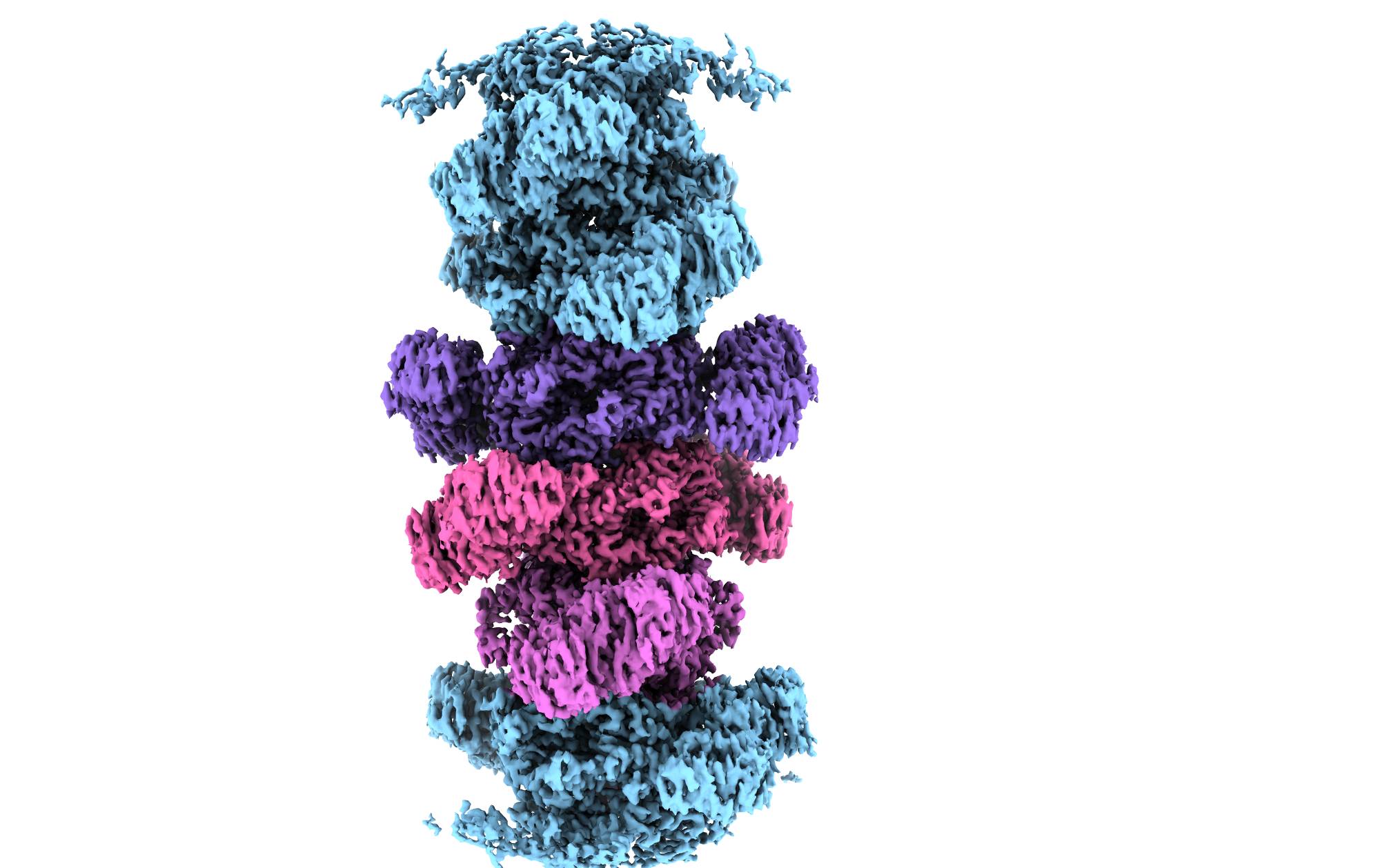Senior Researcher Dr. Giedrė Tamulaitienė and colleagues from Vilnius University Life Sciences Center (VU LSC), in collaboration with the researchers from Weizmann Institute of Sciences (Israel), revealed an activation mechanism of the Thoeris antiviral defence system effector. The article Activation of Thoeris antiviral system via SIR2 effector filament assembly was published in the prestigious science and technology journal Nature. Researchers have determined the structure of the previously unknown active SIR2 effector of the bacterial defence system Thoeris (named after the Egyptian goddess who protects childbirth and fertility) and proposed an activation mechanism.
In addition to the well-known gene and genome “scissors” - restriction-modification and CRISPR-Cas systems - more than 100 different bacterial antiviral defence systems have been discovered. A group of researchers led by Dr. G. Tamulaitienė is studying the Thoeris bacterial defence system that consists of the TIR protein sensor and SIR2 effector protein. When the TIR sensor protein senses a viral infection, it sends a “message” and synthesises a unique small molecule called gcADPR. This messenger molecule is recognised by another protein of the Thoeris system - the effector SIR2 protein - that begins to degrade the molecule cofactor NAD, which is essential for the survival and reproduction of bacteria. In this way, the infected bacterium “surrenders” – it dies before the virus can replicate, but this gives neighbouring bacteria the ability to survive, thus preserving their population.

Helical filament structure of the Thoeris SIR2 effector
Until now, it was not known how the Thoeris effector “reads the message” and turns on its activity. Using cryogenic electron microscopy, researchers at Vilnius University determined the structure of the active effector and showed that, when it binds the molecule produced by the sensor, the SIR2 effector forms a long polymer–helical filament. The filament structure stabilises the active center of the effector and ensures effective degradation of the NAD molecule. “Some other bacterial antiviral systems also form filaments, but their biological significance was unknown until now. We have shown that filament formation helps to ensure a switch-like response: only when a certain level of virus signal is reached, the effector activity is “switched on”, and leads to bacterial death,” says Dr. G. Tamulaitienė.
The paper’s authors include: Dr. Giedrė Tamulaitienė, PhD student Džiugas Sabonis, Dr. Giedrius Sasnauskas, Audronė Rukšėnaitė, Dr. Arūnas Šilanskas, Dr. Mindaugas Zaremba, Prof. Virginijus Šikšnys from VU LSC and Carmel Avraham, Dr. Gal Ofir, Prof. Rotem Sorek from Weizmann Institute of Science.
Nature is a top-ranked, highly cited international weekly journal that publishes the finest peer-reviewed research covering all areas of science and technology. The studies are selected based on their originality, importance, interdisciplinary interest, relevance, accessibility, and surprising conclusions.
This research was supported by the Research Council of Lithuania (grant S-MIP-21-6 to Dr. G. Tamulaitienė).
